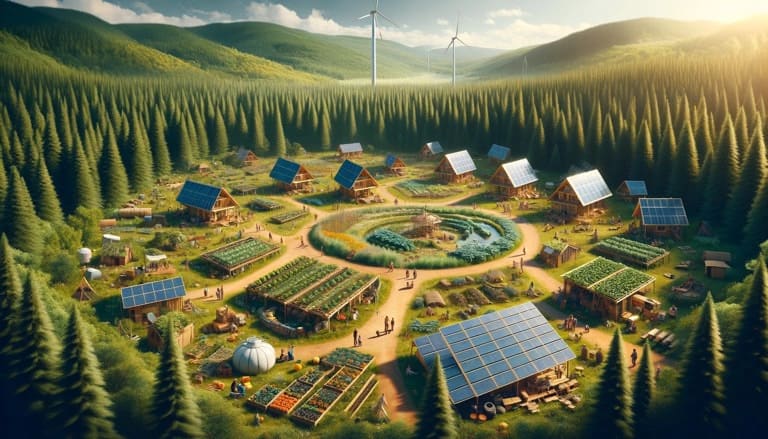In the tapestry of modern life, where the hum of technology and the pace of daily existence often ensnare us, a quiet revolution is taking root, aiming to weave us back into the natural narrative from which we’ve drifted. This revolution speaks of a journey back to the essence of sustenance, advocating for a world where we are not mere spectators but active participants in the story of our food. It’s a movement that transcends the mere act of eating, inviting us into a deeper, more intimate dialogue with the ingredients that nourish us. This is the path to culinary independence, a rediscovery of food self-sufficiency that offers not just a route to survival, but a bridge to a more meaningful and grounded way of living.
In this rekindled relationship with our food, the concept of food self-sufficiency emerges as a beacon of transformation. It heralds a return to the basics, to a time when the cycles of nature dictated the rhythms of human life. Yet, it brings with it a contemporary twist, merging ancient wisdom with modern sensibilities. It’s about understanding the provenance of our meals, recognizing the journey from seed to plate, and honoring the hands that toil to feed us. This movement is not driven by nostalgia but by a conscious choice to embrace health, environmental stewardship, and a genuine connection to the earth.
The initial steps on this path can be as simple as they are profound. Beginning small, perhaps with a single tomato plant perched on a balcony or a cluster of herbs basking on a windowsill, serves as a gentle introduction to a larger world of self-sufficiency. These modest beginnings can flourish into a vibrant garden, a testament to the resilience of nature and the human spirit. It’s a process that unfolds with time, patience, and a touch of wonder, transforming a handful of seeds into a bountiful harvest.
As we embark on this journey, we find that cultivating our food is just the start. The true essence of culinary independence lies in the transformation that occurs within us—a shift in how we perceive, value, and engage with our food. It’s a step towards a future where the act of eating becomes an act of communion with the world around us, a ritual that nourishes not just our bodies but our souls. This is the art of living in harmony with the earth, a dance with nature that feeds more than our physical hunger—it nourishes our need for connection, sustainability, and genuine sustenance.
In embracing food self-sufficiency, we are not just planting seeds in the soil; we are sowing the seeds of change in our lives and communities. It’s a journey that challenges us to rethink our relationship with food, urging us to consider not just the end product but the entire cycle of life that brings it to our tables. This path is lined with the joys of harvesting what we sow, the satisfaction of a meal crafted from ingredients we’ve nurtured, and the peace that comes from knowing we are participants in the stewardship of our planet.
As we venture deeper into the realm of culinary independence, we discover that this is more than a personal endeavor; it’s a collective journey that connects us with others who share our vision. It’s about building communities around the shared table of the earth, where the fruits of our labor become the bonds that unite us. In this space, every meal becomes a celebration of life, a testament to the power of food to bring us together, to heal, and to inspire.
The path to culinary independence is, at its heart, a journey of rediscovery—a reawakening to the wonders of the natural world and our place within it. It invites us to look anew at the simple act of feeding ourselves, to find joy in the rhythms of the seasons, and to embrace the beauty of life’s cycle. In this journey, we find not just sustenance for our bodies, but nourishment for our souls, a sense of belonging to the larger web of life that sustains us all. It’s a journey that calls us to live more authentically, more sustainably, and more fully, in harmony with the earth and with each other.


